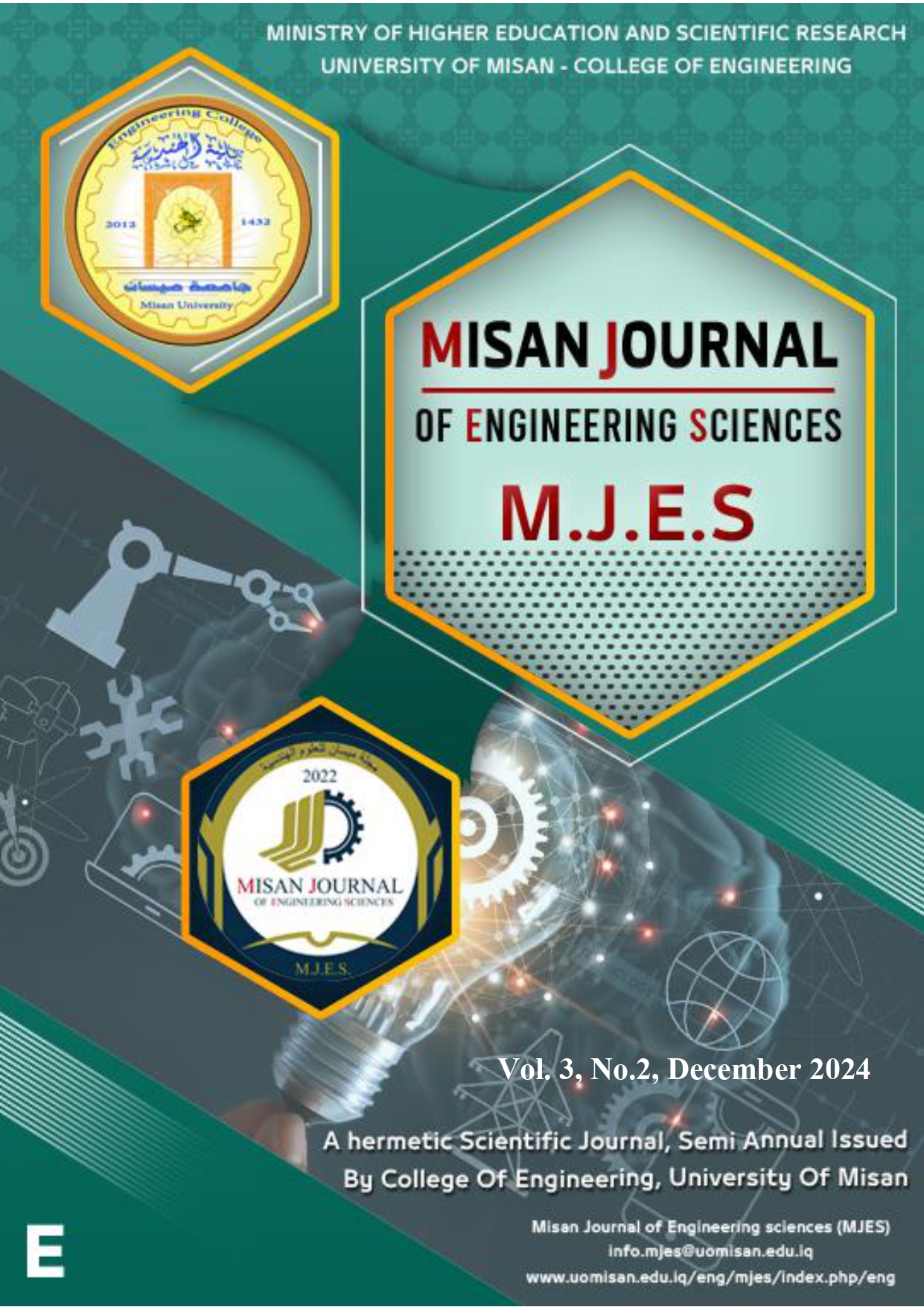FLEXURAL BEHAVIOR OF ALIGNED STEEL REINFORCED CONCRETE BEAMS
DOI:
https://doi.org/10.61263/mjes.v3i2.124Abstract
:The configuration of the steel reinforcement is investigated in this work in connection to
the flexural behavior of reinforced concrete beams(RC beams).Employing unique steel reinforcement
configurations allowed for the investigation of the influence that the shape of the steel has on the
parameters of the concrete beam, such as the cracking load, ultimate load, load-deflection curve ,
ductility, and energy absorption. Seven beams were manufactured in all, and they were divided in
to two groups: those that supported the concrete beams with curved steel bars, and those that used
triangular steel reinforcement. Several bars of curved and triangle reinforcement were employed, with
two, three, and five bars being utilized.The flexural behavior of reinforced concrete beams was found
to be affected by the presence of curved and triangular steel reinforcement, according to research.
The curved steel reinforcement not only increased the flexural strength but also significantly enhanced
the ultimate load-bearing capacity. Additionally , the cracking strength was marginally increased as
a result of the reinforcement. On the other hand, the cracking strength was significantly lower and
the final flexural strength was significantly higher for steel bars that were organized in a triangle .
In contrast to the triangular form, which showed a decrease in the cracking load of 4.2%-7.1% and
an increase in the ultimate load of 7.8%-8.15%, the cracking load increased from 5.7% to 8%, and
the ultimate load climbed from11.4% to 32%.Both of these changes were accomplished by increasing
the ultimate load.The ductility of the steel as well as its capacity to absorb energy were both enhanced
by the modification of its configuration

Downloads
Published
How to Cite
Issue
Section
License
Copyright (c) 2024 Misan Journal of Engineering Sciences

This work is licensed under a Creative Commons Attribution 4.0 International License.




